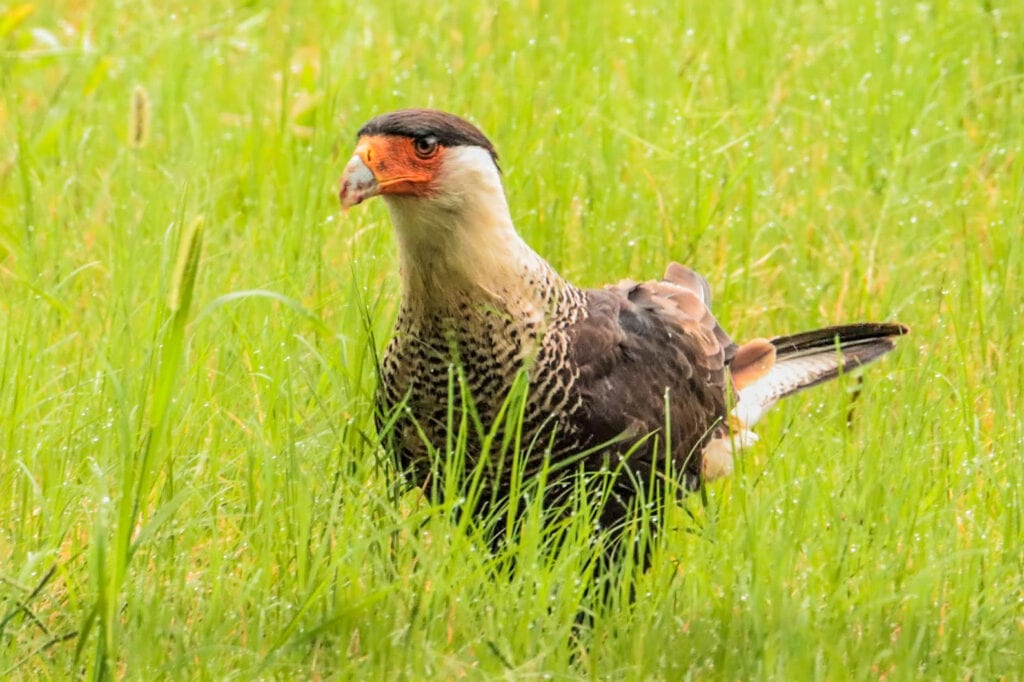The Crested Caracara is also known as the Mexican Eagle, though it is not an eagle at all. This striking bird of prey is a member of the falcon family found throughout South and Central America, with some limited distribution in the southern United States, particularly Texas, Arizona, and Florida.
Crested Caracaras are fascinating birds that can be instantly recognized for their flaming orange facial coloration, speckled breast feathers, and long powerful legs. Its long legs and large body are partly to blame for this bird being mistaken as a member of the eagle family, but make no mistake, the Crested Caracara is a falcon through and through.
Related Article: Why Do Songbirds Sing So Much? A New Study Has the Answer
Fun Facts About the Crested Caracara
Crested Caracaras are fascinating birds. Let’s dive into some Crested Caracara fun facts to learn more about what makes them unique!
Mistaken identity: We’ve already covered the fact that the so-called “Mexican Eagle” isn’t an eagle at all, but there’s even more confusion to add to this story. The Crested Caracara is a beloved national symbol for Mexico and an important cultural icon. Despite this, it is actually not the same eagle that is found on the Mexican flag. That eagle is actually a Golden Eagle. It is possible that the original legend depicted by the Mexican coat of arms, the eagle devouring a rattlesnake at the site of the future city of Tenochtitlan, may have been intended to describe a Crested Caracara. Nevertheless, the Golden Eagle stands as Mexico’s national symbol to this day.
Opportunist: Most falcons subsist on eating prey that they’ve hunted, but the Crested Caracara doesn’t do things in the way that a typical falcon does. These large birds of prey actually behave a bit like vultures and their approach to finding food is very much that of an opportunist. They hunt, scavenge carrion, and even steal from other birds if the opportunity presents itself. Crested Caracaras can be pushy too, and aren’t afraid to chase vultures away from a carcass to keep the choice meat to themselves.
Hoofing it: Crested Caracaras are often seen walking on the ground and even do much of their hunting on foot. Very few raptors do this.
Nest builders: Falcons aren’t known for their home-making skills. And once again, the Crested Caracara can’t help but flip the script on the typical falcon formula. While every other falcon species prefers to nest by digging out scrapes in the ground or on roof gravel, or by co-opting nests that others have built in the past, Crested Caracaras actually build a nest themselves. They will gather nesting materials and build onto the same nest site year after year if possible. Their nests are often found in trees, shrubs, and sometimes even large cacti. they are the only falcons to build their own nests.
The Future of the Crested Caracara
The International Union for Conservation of Nature’s Red List of Threatened Species lists the Crested Caracara as being of “Least Concern” with regards to global conservation. In parts of their U.S. range, though, there are concerns about the long-term stability of their populations.
Popular Article: Species Spotlight: The Red-winged Blackbird

